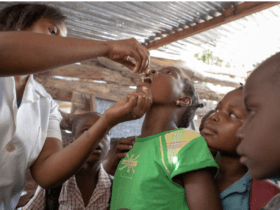
Sexually transmitted diseases (STDs) are also known as sexually transmitted infections. They’re passed through vaginal, anal, or oral sexual contact.
Many STDs display no symptoms at all. Left untreated, STDs can lead to fertility problems and an increased risk of cervical cancer. These risks make it even more important to practice safe sex.
It’s important to recognize the signs of an STD so that you can treat the infection before it becomes a health risk.
Common symptoms of STDs
There are possible STD symptoms women should be aware of so that they can seek medical advice if necessary. Some of the most common symptoms are described below.
1. Changes in urination
An STD can be indicated by pain or a burning sensation during urination, the need to pee more frequently, or the presence of blood in the urine.
2. Abnormal vaginal discharge
The look and consistency of vaginal discharge changes continually through a woman’s cycle. Thick, white discharge can be a sign of a yeast infection. When discharge is yellow or green, it might indicate gonorrhea or trichomoniasis.
Every Woman Should Know These 6 Factors That May Prevent Pregnancy
3. Itching in the vaginal area
Itching is a non-specific symptom that may or may not be related to an STD.
4. Sex-related causes for vaginal itching may include:
- allergic reaction to a latex condom
- yeast infection
- pubic lice or scabies
- genital warts
- the early phases of most bacterial and viral STDs
- Pain during sex
Types of sexually transmitted diseases
1. Chlamydia
The rate of infection of chlamydia among women is more than two and a half times the rate among men. Most people with chlamydia have no symptoms, but it can lead to serious health problems like infertility.
2. Gonorrhea
Gonorrhea is similar to chlamydia in that women are more often affected than men. Signs of the infection include painful urination and white, yellow, or green discharge.
Without adequate medical care, women can develop pelvic inflammatory disease.
3. Genital Herpes
Genital herpes is more common in women than men, but it affects an alarming 20 percent of teens and adults. There is no cure for herpes, only medicines that can help to prevent and ease the pain and shorten outbreaks.
4. Human Papillomavirus Virus (HPV)
HPV is the most common STD among both genders,
The virus is the main cause of cervical cancer.
5. Syphilis
Untreated syphilis in a mother is a serious life risk for an unborn baby. The STD can be treated with antibiotics to kill the bacteria.
How to prevent sexually transmitted diseases.
1. Get tested regularly
Yu may never know if you do not get tested regularly. Find out before it is too late and y=when you can still do something about it.
2. Use protection
Whether it’s for vaginal, anal, or oral sex, a condom can help protect both you and your partner.
Spermicides, the birth control pill, and other forms of contraception may protect against pregnancy, but they don’t protect against STDs.
Also, always remember that honest communication with both your doctor and your partner about your sexual history is very important.

















Leave a Reply